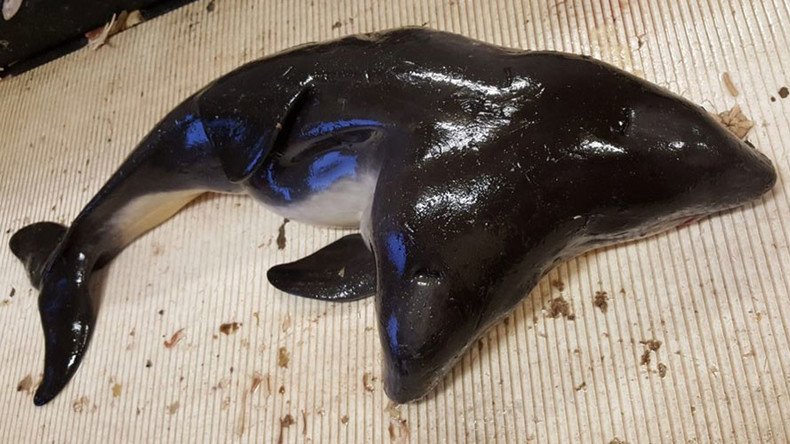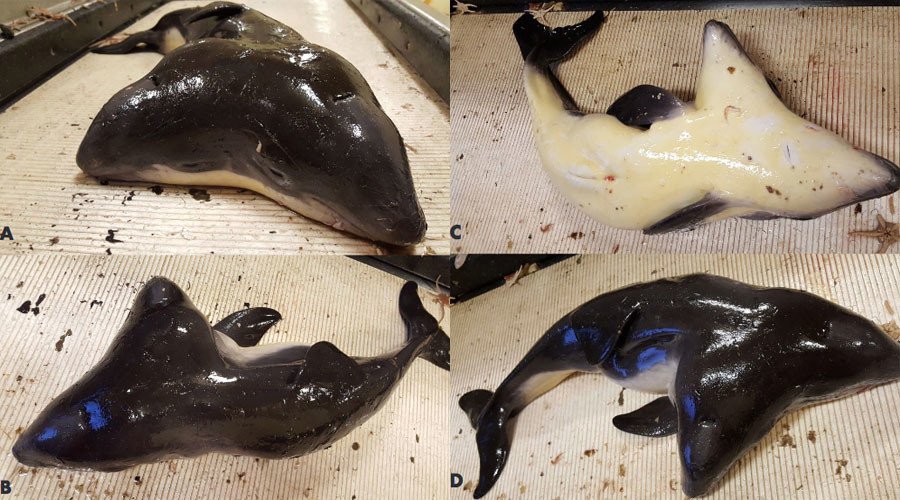'World’s first': 2-headed porpoise caught off coast of the Netherlands (PHOTOS)

The world’s first known case of porpoise conjoined twins have been caught in waters off the coast of the Netherlands.
The phenomenon, which has left the creature with a single body and two fully-grown heads, is known as ‘partial twinning’. The porpoise was captured by a fisherman on May 30.
Conjoined twin mammals are extremely rare. This is only the 10th known case of twinning cetaceans – a group including whales, dolphins and porpoises – known worldwide, according to a paper detailing the discovery published in the Online Journal of the Natural History Museum Rotterdam.
READ MORE: Disturbing faceless fish hauled from ‘the most unexplored environment on Earth’ (PHOTO)

“Even normal twinning is extremely rare in cetaceans,” wrote researchers, citing that only 0.5 per cent of all known pregnant cetaceans are estimated to have a carried a twin pregnancy.
“There is simply not enough room in the body of the female to give room to more than one fetus,” Dr Erwin Kompanje told New Scientist.
READ MORE: Delighted scientists discover goofy squid (VIDEO)
Fishermen captured the animal inadvertently and, fearing it was illegal to bring it to shore, threw it back into the sea after taking a series of photographs.
While they don’t have the porpoise’s body to inspect, researchers are satisfied the discovery will fill a huge gap in the understanding of conjoined cetaceans, and partial twinning harbour porpoises in particular.












